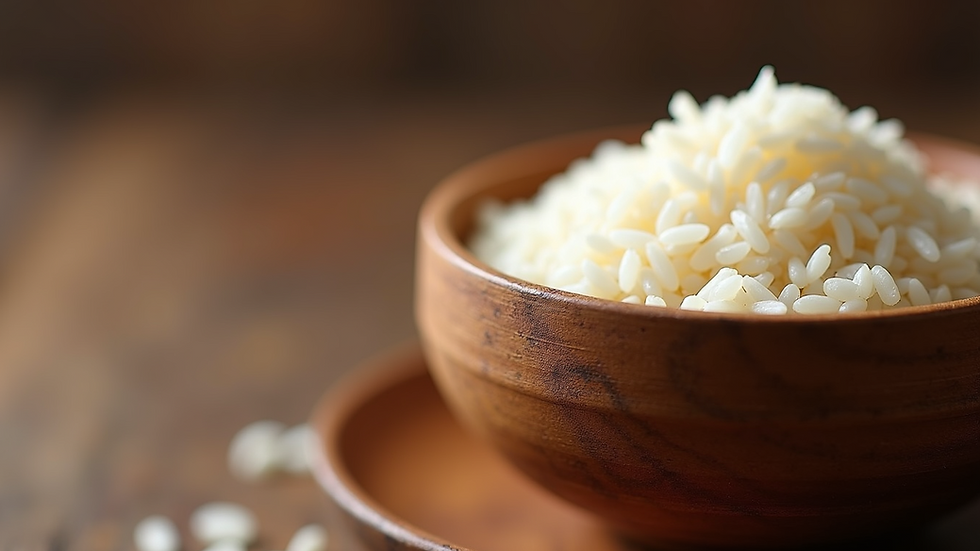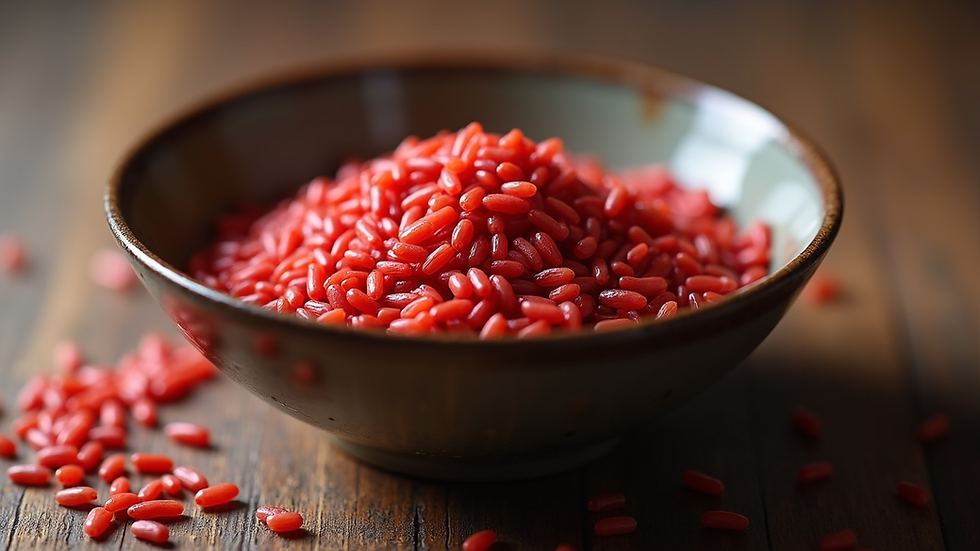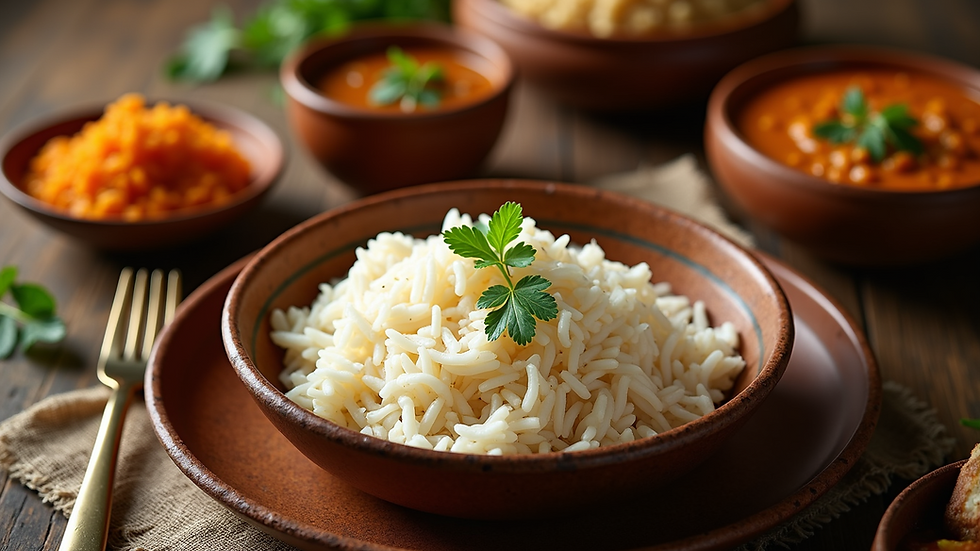Exploring Popular Indian Rice Varieties and Their Benefits
- rahul nair
- Aug 21
- 4 min read
Rice is a staple food in India, forming the foundation of many meals across the country. The diversity of rice varieties in India is vast, reflecting the rich agricultural heritage and regional preferences. Each variety has unique characteristics, flavors, and nutritional benefits. Understanding these traditional Indian rice varieties can help you make informed choices for your diet and cooking. This article explores some of the most popular traditional Indian rice varieties and highlights their benefits.
Understanding Traditional Indian Rice Varieties
India is home to thousands of rice varieties, each adapted to different climates and soil types. Traditional Indian rice varieties are often grown using age-old farming methods, preserving their natural qualities and nutritional value. These varieties are not only important for cultural reasons but also for their health benefits.
Some well-known traditional rice types include Basmati, Sona Masoori, Ponni, and Gobindobhog. These varieties differ in grain size, aroma, texture, and cooking properties. For example, Basmati rice is famous for its long grains and fragrant aroma, making it ideal for biryanis and pilafs. On the other hand, Sona Masoori is a medium-grain rice preferred for everyday meals due to its light texture and quick cooking time.

Nutritional Benefits of Traditional Rice
Traditional Indian rice varieties often retain more nutrients compared to highly processed white rice. Many of these varieties are rich in fiber, vitamins, and minerals. For instance, red and brown rice varieties contain antioxidants and higher fiber content, which aid digestion and help maintain blood sugar levels.
Incorporating these rice types into your diet can contribute to better heart health, improved metabolism, and sustained energy release. Additionally, some varieties have a low glycemic index, making them suitable for people managing diabetes.
Popular Traditional Indian Rice Varieties and Their Unique Features
India’s diverse climate allows for the cultivation of many rice varieties, each with distinct qualities. Here are some popular traditional Indian rice varieties and what makes them special:
1. Basmati Rice
Basmati rice is perhaps the most famous Indian rice variety globally. It is known for its long, slender grains and aromatic fragrance. Grown mainly in the northern states like Punjab and Haryana, Basmati rice is ideal for special dishes such as biryanis and pulaos.
Texture: Fluffy and non-sticky when cooked
Aroma: Nutty and floral
Health benefits: Low glycemic index, good for weight management
2. Sona Masoori
Sona Masoori is a lightweight, medium-grain rice grown primarily in Andhra Pradesh and Karnataka. It is a popular choice for daily meals due to its quick cooking time and soft texture.
Texture: Soft and slightly sticky
Aroma: Mild and subtle
Health benefits: Low in starch, easy to digest
3. Gobindobhog
Gobindobhog is a short-grain, aromatic rice variety from West Bengal. It is prized for its sweet fragrance and sticky texture, making it perfect for traditional Bengali dishes.
Texture: Sticky and soft
Aroma: Sweet and floral
Health benefits: Rich in antioxidants
4. Ponni Rice
Ponni rice is widely cultivated in Tamil Nadu and is known for its medium grain and soft texture. It is commonly used in South Indian cuisine, especially for idlis and dosas.
Texture: Soft and fluffy
Aroma: Mild
Health benefits: Easy to digest, low in fat
5. Red Rice
Red rice varieties are grown in various parts of India, including Kerala and Odisha. They are unpolished and retain the bran layer, which gives them a reddish color and a nutty flavor.
Texture: Chewy and firm
Aroma: Earthy
Health benefits: High in fiber, iron, and antioxidants

Which Rice Variety is Best in India?
Choosing the best rice variety depends on your dietary needs, cooking preferences, and the dish you want to prepare. Here are some recommendations based on different criteria:
For aroma and special dishes: Basmati rice is the top choice due to its fragrance and fluffy texture.
For everyday cooking: Sona Masoori and Ponni rice are excellent options because they cook quickly and have a pleasant texture.
For health-conscious individuals: Red rice and brown rice varieties are preferable due to their high fiber and nutrient content.
For traditional recipes: Gobindobhog rice is ideal for Bengali sweets and festive dishes.
When selecting rice, consider factors like cooking time, texture, and nutritional benefits. Experimenting with different varieties can enhance your culinary experience and provide health advantages.
How to Incorporate Traditional Indian Rice Varieties into Your Diet
Incorporating traditional rice varieties into your meals is simple and rewarding. Here are some practical tips:
Try new recipes: Use Basmati rice for biryanis, Sona Masoori for everyday rice dishes, and red rice for salads or mixed rice bowls.
Mix rice types: Combine white rice with red or brown rice to improve nutritional value without compromising taste.
Use rice in snacks: Traditional rice varieties can be used to make snacks like puffed rice or rice flour-based treats.
Cook with minimal processing: Avoid over-polishing rice to retain nutrients and flavor.
Pair with healthy sides: Combine rice with vegetables, legumes, and lean proteins for balanced meals.
By diversifying your rice choices, you can enjoy a variety of flavors and textures while boosting your health.

The Cultural Significance of Traditional Indian Rice
Rice is more than just food in India - it holds cultural and religious importance. Many festivals and rituals involve rice as a symbol of prosperity and fertility. Traditional rice varieties are often preferred during ceremonies and special occasions to honor heritage and maintain authenticity.
Farmers and communities continue to preserve these varieties, supporting biodiversity and sustainable agriculture. Choosing traditional rice supports these efforts and helps keep ancient farming practices alive.
Exploring the world of traditional Indian rice varieties opens up a rich tapestry of flavors, health benefits, and cultural stories. Whether you are a food enthusiast or health-conscious eater, embracing these varieties can enrich your culinary journey.
For more information on the diverse indian rice variety and their benefits, you can explore trusted resources and local markets to find the best options suited to your needs.


Comments